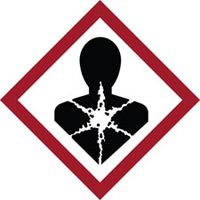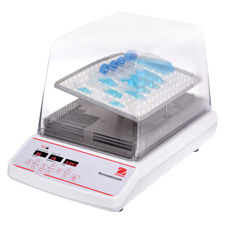| The Home page of ILPI's Safety Data Sheet (SDS) Resource, the leader in SDS information since 1995! | |
| The history and philosophy behind this resource. | |
| A curated collection of books and reference materials concerning Safety Data Sheets and closely related topics. | |
| Paste your plain text SDS into the SDS-Demystifier, and it will be converted into a hypertext-enriched document with links to detailed explanations of each key term. | |
| An extensive list of frequently asked questions about Safety Data Sheets including regulations, content, compliance, and more. | |
| A humorous take on Safety Data Sheet jargon. Fill in the blanks on our entry form to generate a personalized Unsafety Data Sheet to share with your coworkers. | |
| Since 1995, we've maintained this massive curated list of the best places to find Safety Data Sheets on the Internet. | |
| You are here! Way more than a glossary, this hypertext-enhanced resource covers hundreds of SDS-related terms and expert knowledge. Each entry includes both the SDS relevance and links to additional authoritative resources. | |
| Archived results of Safety Data Sheet related polls taken by some of our millions of site visitors | |
| The OSHA regulations behind SDS regulations, including the inspection guidelines and over 400 official interpretations letters under the Hazard Communication Standard | |
| Commercial suppliers of SDS authoring and management software as well as cloud compliance services. | |
| Commercial companies that will create SDS's for your specific needs as well as SDS translation companies. |

Safety signs, banners, and scoreboards? Get yours at Safety Emporium!
Definition

Get your GHS-compliant labels and signs from Safety Emporium.
Aspiration is defined in the 2012 version of the OSHA Hazard Communication Standard 29 CFR 1910.1200 Appendix A paragraph A.10.1 (HCS 2012) as the entry of a liquid or solid chemical directly through the oral or nasal cavity, or indirectly from vomiting, into the trachea and lower respiratory system...Aspiration is initiated at the moment of inspiration, in the time required to take one breath, as the causative material lodges at the crossroad of the upper respiratory and digestive tracts in the laryngopharyngeal region.
Aspiration hazards are the specific toxicity or other hazards posed by aspiration including various severe acute effects such as chemical pneumonia, pulmonary injury or death following aspiration.
Additional Info
The concept of aspiration hazard was first introduced into OSHA's Hazard Communication Standard 29 CFR 1910.1200 during its 2012 revision (HCS 2012). As discussed in the Preamble to the HCS update, OSHA's hazard classification requirements include only the most severe of the two GHS categories for Aspiration Hazard in HCS 2012, Category 1, which is defined at 29 CFR 1910.1200 Appendix A Table A.10.a. We present both categories here for clarity:
| Category | Criteria |
NOTE 1: Examples of substances included in Category 1 are certain hydrocarbons, turpentine and pine oil NOTE 2: Taking this into account, some authorities would consider the following to be included in this Category: n-primary alcohols with a composition of at least 3 carbon atoms but not more than 13; isobutyl alcohol, and ketones with a composition of no more than 13 carbon atoms. |
|
| Category 1: Chemicals known to cause human aspiration toxicity hazards or to be regarded as if they cause human aspiration toxicity hazard | A substance shall be classified in Category 1:
(b) If it is a hydrocarbon and has a kinematic viscosity ≤ 20.5 mm2/s, measured at 40 °C. |
| Category 2: Chemicals which cause concern owing to the presumption that they cause human aspiration toxicity hazard | On the basis of existing animal studies and expert judgment that takes into account surface tension, water solubility, boiling point, and volatility, substances, other than those classified in Category 1, which have a kinematic viscosity ≤14 mm2/s, measured at 40 °C (see note 2). |
The labeling elements for aspiration toxicity per GHS Rev 4, Table 3.10.2 are (again, under OSHA only Aspiration Hazard Category 1 is subject to 29 CFR 1910.1200 labeling requirements), if so classified:
| Category 1 | Category 2 | |
| Symbol | Health hazard | Health hazard |
| Signal Word | Danger | Warning |
| Hazard statement | May be fatal if swallowed and enters airway | May be harmful if swallowed and enters airways |

Your chemical reactions can be run safely and effectively with US-made clamps and other laboratory accessories from Safety Emporium.
OSHA's decision to omit GHS Aspiration Hazard Category 2 from HCS 2012 means that during the hazard classification process, the manufacturer would be required to report a Category 2 aspiration hazard as a Hazard Not Otherwise Classified on the SDS; reporting the hazard on the label would be optional.
Given that Category 1 Aspiration Hazard deals only with toxicity, it was suggested during the rulemaking process that this hazard category be called "aspiration toxicity hazard" to more accurately reflect the health risk, however OSHA decided to stick with "aspiration hazard" to maintain consistency with the GHS model.
Another curiosity of the rulemaking process was a stakeholder who suggested that drowning in water could be considered an aspiration hazard. OSHA has made clear that this is not the case. However, as we discuss in the HNOC entry, water is not considered hazardous even though people have died from drinking too much water.
Aspiration is specific to liquids and solids which is technically different from inhalation, which is the drawing of air, gases or finely suspended and divided materials such as fumes, mists, vapors, dusts etc. into the lungs. There is obviously a middle ground somewhere between the two and both processes may occur at the same time. The HazCom Standard addresses this at 29 CFR 1910.1200 Appendix A paragraph 10.1.5.3:
Aerosol and mist products are usually dispensed in containers such as self-pressurized containers, trigger and pump sprayers. The key to classifying these products is whether a pool of product is formed in the mouth, which then may be aspirated. If the mist or aerosol from a pressurized container is fine, a pool may not be formed. On the other hand, if a pressurized container dispenses product in a stream, a pool may be formed that may then be aspirated. Usually, the mist produced by trigger and pump sprayers is coarse and therefore, a pool may be formed that then may be aspirated. When the pump mechanism may be removed and contents are available to be swallowed then the classification of the products should be considered.
The two most common aspiration hazards in consumer products are aliphatic hydrocarbons (such as gasoline, turpentine, and kerosene) and oils or fats (such as mineral or vegetable oils). Even supposedly "green" cleaning products such as those containing limonene are aspiration hazards. Isopropyl alcohol and acetone are other solvents found in both commercial and consumer products that pose an aspiration hazard.

Safety Emporium has all kinds of lab equipment such as this incubating rocking shakers and more.
SDS Relevance
As noted above, under the OSHA HazCom Standard only a Category 1 Aspiration Hazard will be indicated on the label. The material may be Category 2, and if so this should be listed as a hazard not otherwise classified on the Safety Data Sheet. This is another excellent example of why reading SDS's is important before you use a material for the first time.
In general, if you are working with any of the substances listed at the bottom of the last section, or any other material considered an aspiration hazard, you need to take appropriate measures such as engineering controls or personal protective equipment to reduce your risk for exposure. risk depends on many factors including the material properties, the amounts being used, potential routes of exposure, and the procedures for handling the material in your workplace. In other words, you need to perform a risk analysis to determine your risk for exposure and the necessary steps you can take to reduce or minimize that risk.
Further Reading
- Aspiration hazard and consumer products:a review, Intl J Consumer and Product Safety, 1996, 3 (3), 153-164.
- Respiratory complications following hydrocarbon aspiration in children in Pediatr Pulmonol 2016, 51(6), 560-9.
- Petroleum jelly: Safe for a dry nose? at the Mayo Clinic.
- Aspiration Pneumonitis and Pneumonia, a medical article at the Merck Manual. A consumer-level version is also available.
- Safety evaluation and risk assessment of d-Limonene, Toxicol Environ Health B Crit Rev 2013 16(1) 17-38.
See also: emetic, hazard classification, inhalation.